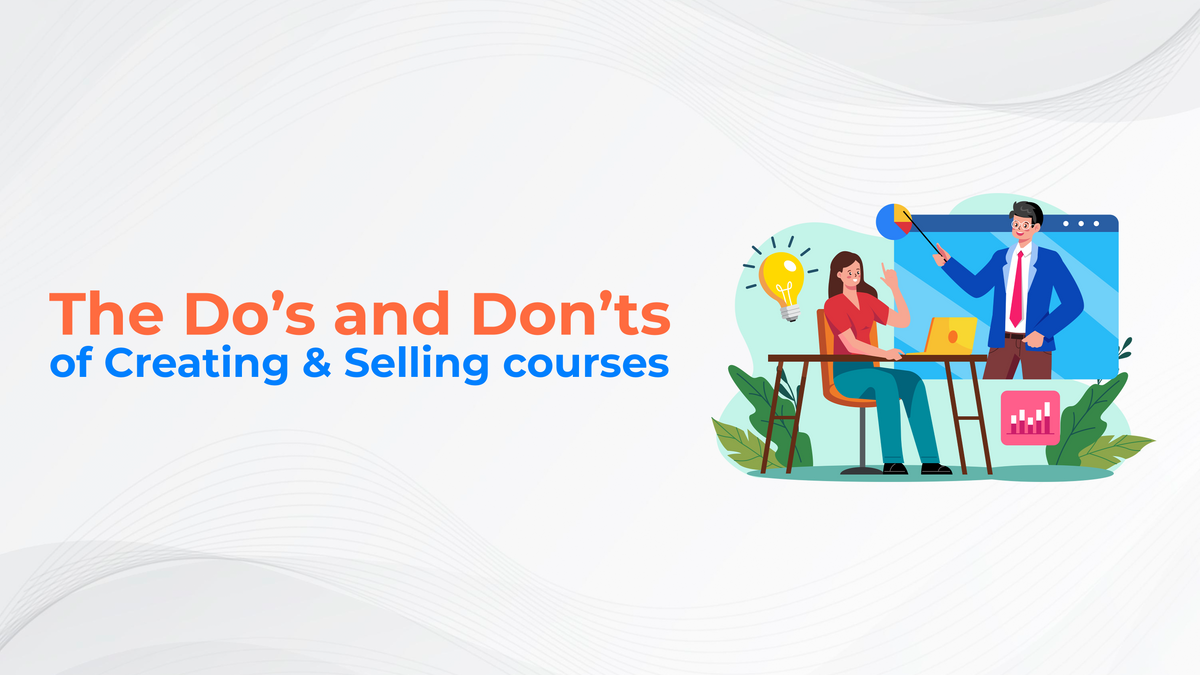Creating and selling courses can be a rewarding source of income for those who are passionate about teaching and sharing their knowledge. Selling your skills as an online course creator is advantageous because there are no geographical limitations, you have the freedom to create whatever type of content you want, and it provides a reliable stream of passive income. With the right resources, anyone can become an expert in creating and selling courses.
Before starting to create your own course, it's important to do some research into what type of courses people are looking for. This will help you determine what kind of content would be most valuable to potential buyers. Additionally, consider how much time you can realistically dedicate to creating the course materials. Once you've settled on a topic and estimated the amount of effort required, start mapping out each lesson plan and preparing any resources that might be useful for students.
What is Course Creation?
Course creation is an educational process that involves designing, developing, and delivering an educational course. It is an important part of the instructional design process, as it provides structure to lessons and activities throughout a course. Course creation can be done by individuals or through collaborative efforts with other professionals.
When creating a course, educators assess the learning objectives of students and develop appropriate material for the age levels and subject areas involved. They create content for each lesson in the form of text, video, audio recordings or interactive media. Educators also design assessments such as quizzes and tests to measure student progress and engagement with the material. Additionally, they provide feedback on assignments in order to encourage learners to improve their understanding of concepts being studied.
Benefits of Selling Courses
The rise of digital technology has made it easier than ever to share knowledge and skills. As a result, more and more professionals are turning to the sale of courses as an avenue for expanding their businesses. Selling courses can provide various benefits for businesses and entrepreneurs alike.
Selling courses can have many advantages over traditional services or products. For example, since a course is typically delivered virtually, there is no need to worry about manufacturing costs or shipping fees.
Additionally, once a course is created, it can generate passive income for the seller because delivery does not require any additional effort on their part. Furthermore, such an approach provides an opportunity for entrepreneurs to reach potential customers around the world without having to invest in physical infrastructure that may be cost prohibitive in certain locations.
Identifying Your Target Audience
Identifying your target audience is a crucial part of any successful marketing strategy. Knowing who you are trying to reach is key in order to develop effective content and ensuring that it reaches the right people. It also helps businesses save time and money by focusing on those most likely to engage with their message.
There are several steps involved in identifying a target audience, including researching demographics, analyzing customer behavior, and gaining insights through surveys or focus groups.
It's important to consider age, gender, location, interests, values, and other factors when designing content for a particular group of people. Marketers should look at the data they have gathered from their own customers as well as industry trends to gain an understanding of which types of messaging will resonate most with their intended audience. Additionally, monitoring social media conversations can help companies determine how their products or services are being received by certain segments of the population.
Preparing Your Course Content
Providing course content to your students is an essential part of any teaching program. Having well-prepared materials can help ensure that your classes are successful and engaging. With that in mind, here are a few tips for preparing your course content effectively.
First, make sure you pick topics that are relevant to the material covered in class. This will ensure that students have the opportunity to understand and practice the concepts they’ve learned in their studies. Additionally, having up-to-date information is important so consider doing research prior to creating or updating course materials.
Second, consider what type of content would be most beneficial for student learning. For example, if you are teaching a math class then visual aids such as diagrams and charts may be more useful than written descriptions alone.
Creating Optimal Learning Experiences
Creating an optimal learning experience within a Learning Management System (LMS) is essential for effective education. With the right tools and strategies, educators can craft engaging content that will encourage learners to achieve their goals. In order to create an ideal LMS environment, it is important to understand the needs of the learner and design a system that meets those needs.
Start by understanding how students interact with the system, as well as what features they need in order to learn effectively. For example, instructors should consider incorporating interactive elements such as quizzes and multimedia content into their lessons, as these can aid in student engagement and knowledge retention. Additionally, providing real-time feedback on assignments can help ensure that learners stay on track and progress towards their educational targets.
Do's and Don'ts of Creating and Selling Courses
Do's of creating and selling courses in LMS:
- Do conduct market research to ensure there is demand for the subject matter.
- Do create a course that is structured and easy to follow.
- Do use engaging and interactive course materials.
- Do use multimedia to make the course more interactive and engaging.
- Do use quizzes and assessments to measure student learning and engagement.
- Do make the course mobile-friendly, so it can be accessed on any device.
- Do include a call-to-action at the end of each lesson or module to encourage student engagement.
- Do offer a free trial or demo of the course to attract potential customers.
- Do provide good customer support and follow-up with your students.
- Do continuously update and maintain the course to ensure it stays relevant and useful to students.
Don'ts of creating and selling courses in LMS:
- Don't create a course without a clear target audience in mind.
- Don't copy or plagiarize content from other sources.
- Don't create a course that is too broad or general in scope.
- Don't use low-quality materials or outdated information.
- Don't overpromise or exaggerate the benefits of the course.
- Don't neglect the importance of promotion and marketing for your course.
- Don't sell your course at a price that is too high or too low.
- Don't neglect to make the course mobile-friendly.
- Don't neglect to provide good customer support and follow-up with your students.
- Don't neglect to update and maintain your course regularly to ensure that it remains relevant and useful to students.
- Don't create a course without conducting market research to ensure there is demand for the subject matter.
- Don't copy or plagiarize content from other sources.
- Don't create a course that is too broad or general in scope.
- Don't use low-quality materials, such as poor-quality videos or outdated information.
- Don't overpromise or exaggerate the benefits of the course.
- Don't neglect the importance of promotion and marketing for your course.
- Don't sell your course at a price that is too high or too low.
- Don't neglect to provide good customer support and follow-up with your students.
- Don't neglect to update and maintain your course regularly to ensure that it remains relevant and useful to students.
Conclusion: Tips for Success
Creating and selling courses is a great way to make money, develop expertise, and teach people. It requires dedication, organization, creativity, and marketing skills to be successful. With the right tools, support and guidance anyone can create an online course that sells well. Finally, if you plan ahead and take action on the tips above, you will set yourself up for success in creating and selling courses. Take the first step today towards achieving your goals by researching what options are available for creating courses online.










